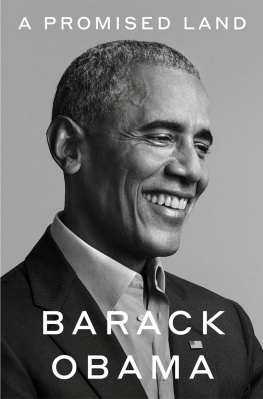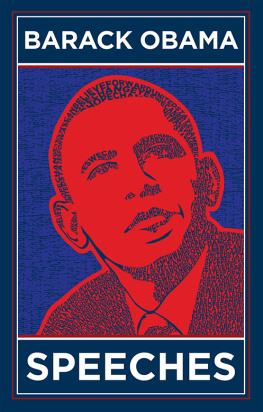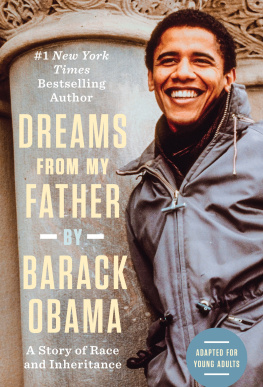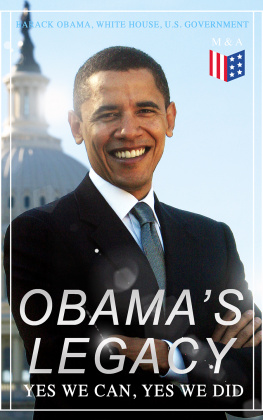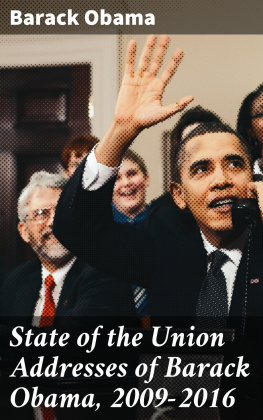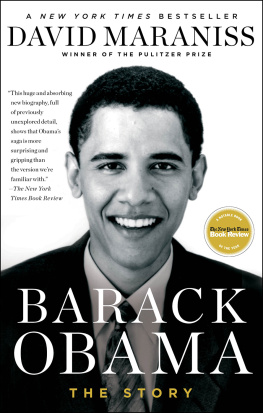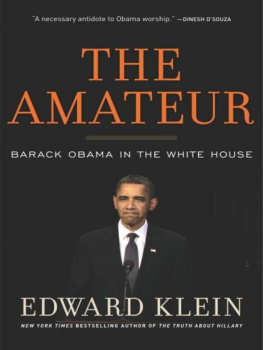ALSO BY BARACK OBAMA
Dreams from My Father
The Audacity of Hope

Copyright 2020 by Barack Obama
All rights reserved.
Published in the United States by Crown, an imprint of Random House, a division of Penguin Random House LLC, New York.
CROWN and the Crown colophon are registered trademarks of Penguin Random House LLC.
The letter from Nicole Brandon on has been edited and condensed for clarity.
Hardback ISBN9781524763169
Deluxe Edition ISBN9780593239049
Ebook ISBN9781524763183
crownpublishing.com
Photograph credits appear on .
Book design by Elizabeth Rendfleisch, adapted for ebook
Cover design: Christopher Brand
Cover photograph: Pari Dukovic
ep_prh_5.6.0_c0_r0
To Michellemy love and lifes partner
and
Malia and Sashawhose dazzling light makes everything brighter
O, fly and never tire, Fly and never tire, Fly and never tire, Theres a great camp-meeting in the Promised Land. FROM AN AFRICAN AMERICAN SPIRITUAL Dont discount our powers; We have made a pass At the infinite. ROBERT FROST, KITTY HAWK
CONTENTS
PREFACE
I BEGAN WRITING THIS BOOK shortly after the end of my presidencyafter Michelle and I had boarded Air Force One for the last time and traveled west for a long-deferred break. The mood on the plane was bittersweet. Both of us were drained, physically and emotionally, not only by the labors of the previous eight years but by the unexpected results of an election in which someone diametrically opposed to everything we stood for had been chosen as my successor. Still, having run our leg of the race to completion, we took satisfaction in knowing that wed done our very bestand that however much Id fallen short as president, whatever projects Id hoped but failed to accomplish, the country was in better shape now than it had been when Id started. For a month, Michelle and I slept late, ate leisurely dinners, went for long walks, swam in the ocean, took stock, replenished our friendship, rediscovered our love, and planned for a less eventful but hopefully no less satisfying second act. And by the time I was ready to get back to work and sat down with a pen and yellow pad (I still like writing things out in longhand, finding that a computer gives even my roughest drafts too smooth a gloss and lends half-baked thoughts the mask of tidiness), I had a clear outline of the book in my head.
First and foremost, I hoped to give an honest rendering of my time in officenot just a historical record of key events that happened on my watch and important figures with whom I interacted but also an account of some of the political, economic, and cultural crosscurrents that helped determine the challenges my administration faced and the choices my team and I made in response. Where possible, I wanted to offer readers a sense of what its like to be the president of the United States; I wanted to pull the curtain back a bit and remind people that, for all its power and pomp, the presidency is still just a job and our federal government is a human enterprise like any other, and the men and women who work in the White House experience the same daily mix of satisfaction, disappointment, office friction, screw-ups, and small triumphs as the rest of their fellow citizens. Finally, I wanted to tell a more personal story that might inspire young people considering a life of public service: how my career in politics really started with a search for a place to fit in, a way to explain the different strands of my mixed-up heritage, and how it was only by hitching my wagon to something larger than myself that I was ultimately able to locate a community and purpose for my life.
I figured I could do all that in maybe five hundred pages. I expected to be done in a year.
Its fair to say that the writing process didnt go exactly as Id planned. Despite my best intentions, the book kept growing in length and scopethe reason why I eventually decided to break it into two volumes. Im painfully aware that a more gifted writer could have found a way to tell the same story with greater brevity (after all, my home office in the White House sat right next to the Lincoln Bedroom, where a signed copy of the 272-word Gettysburg Address rests beneath a glass case). But each time that I sat down to writewhether it was to describe the early phases of my campaign, or my administrations handling of the financial crisis, or negotiations with the Russians on nuclear arms control, or the forces that led to the Arab SpringI found my mind resisting a simple linear narrative. Often, I felt obliged to provide context for the decisions I and others had made, and I didnt want to relegate that background to footnotes or endnotes (I hate footnotes and endnotes). I discovered that I couldnt always explain my motivations just by referencing reams of economic data or recalling an exhaustive Oval Office briefing, for theyd been shaped by a conversation Id had with a stranger on the campaign trail, a visit to a military hospital, or a childhood lesson Id received years earlier from my mother. Repeatedly my memories would toss up seemingly incidental details (trying to find a discreet location to grab an evening smoke; my staff and I having a laugh while playing cards aboard Air Force One) that captured, in a way the public record never could, my lived experience during the eight years I spent in the White House.
Beyond the struggle to put words on a page, what I didnt fully anticipate was the way events would unfold during the three and a half years after that last flight on Air Force One. As I sit here, the country remains in the grips of a global pandemic and the accompanying economic crisis, with more than 178,000 Americans dead, businesses shuttered, and millions of people out of work. Across the nation, people from all walks of life have poured into the streets to protest the deaths of unarmed Black men and women at the hands of the police. Perhaps most troubling of all, our democracy seems to be teetering on the brink of crisisa crisis rooted in a fundamental contest between two opposing visions of what America is and what it should be; a crisis that has left the body politic divided, angry, and mistrustful, and has allowed for an ongoing breach of institutional norms, procedural safeguards, and the adherence to basic facts that both Republicans and Democrats once took for granted.
This contest is not new, of course. In many ways, it has defined the American experience. Its embedded in founding documents that could simultaneously proclaim all men equal and yet count a slave as three-fifths of a man. It finds expression in our earliest court opinions, as when the chief justice of the Supreme Court bluntly explains to Native Americans that their tribes rights to convey property arent enforceable since the court of the conqueror has no capacity to recognize the just claims of the conquered. Its a contest thats been fought on the fields of Gettysburg and Appomattox but also in the halls of Congress, on a bridge in Selma, across the vineyards of California, and down the streets of New Yorka contest fought by soldiers but more often by union organizers, suffragists, Pullman porters, student leaders, waves of immigrants, and LGBTQ activists, armed with nothing more than picket signs, pamphlets, or a pair of marching shoes. At the heart of this long-running battle is a simple question: Do we care to match the reality of America to its ideals? If so, do we really believe that our notions of self-government and individual freedom, equality of opportunity and equality before the law, apply to everybody? Or are we instead committed, in practice if not in statute, to reserving those things for a privileged few?
Next page
